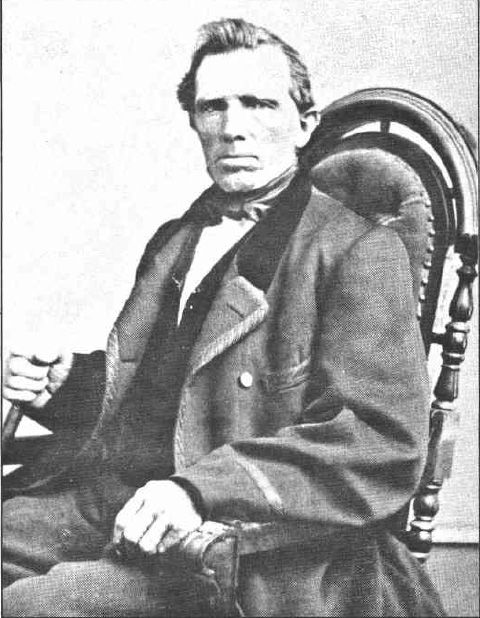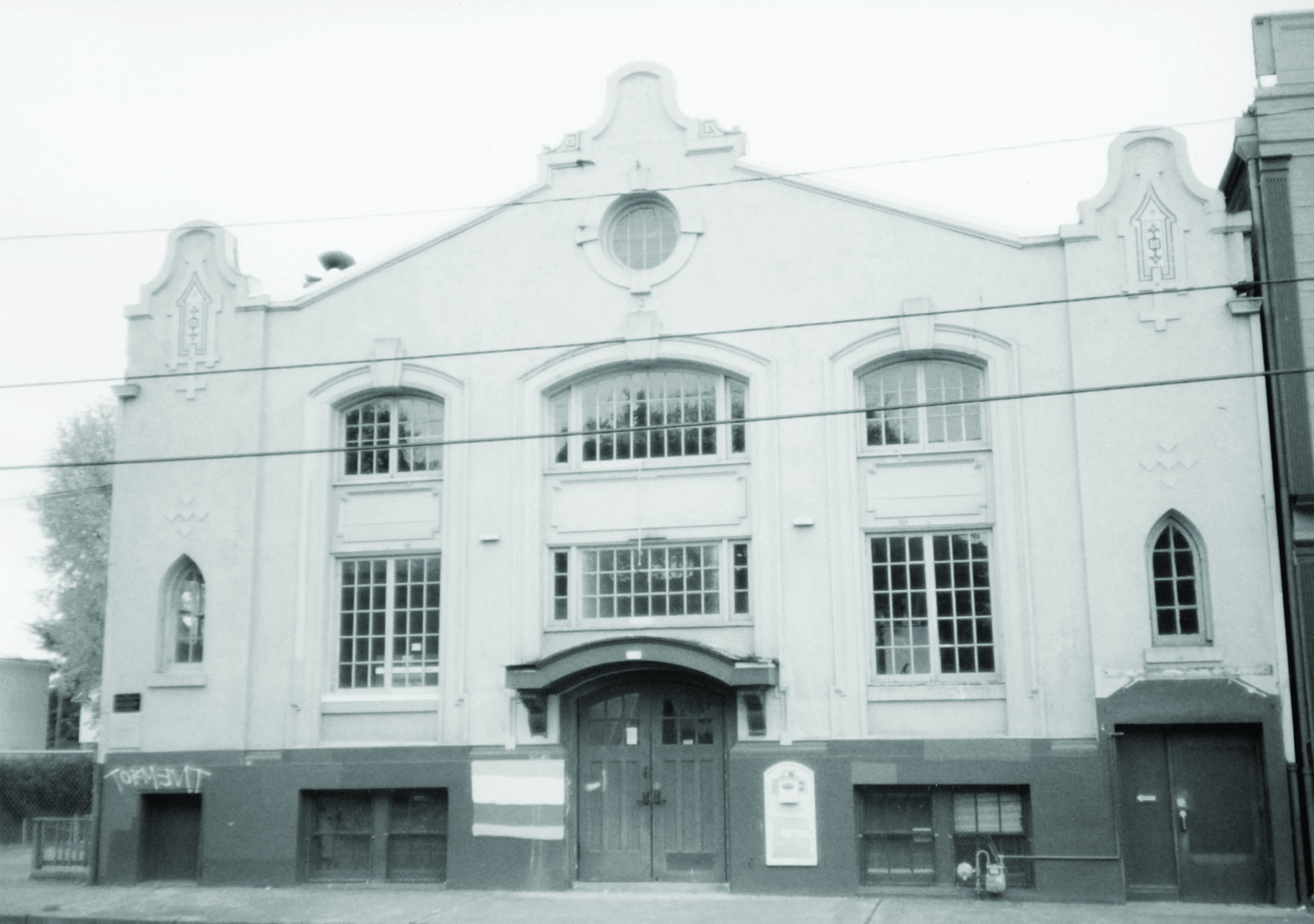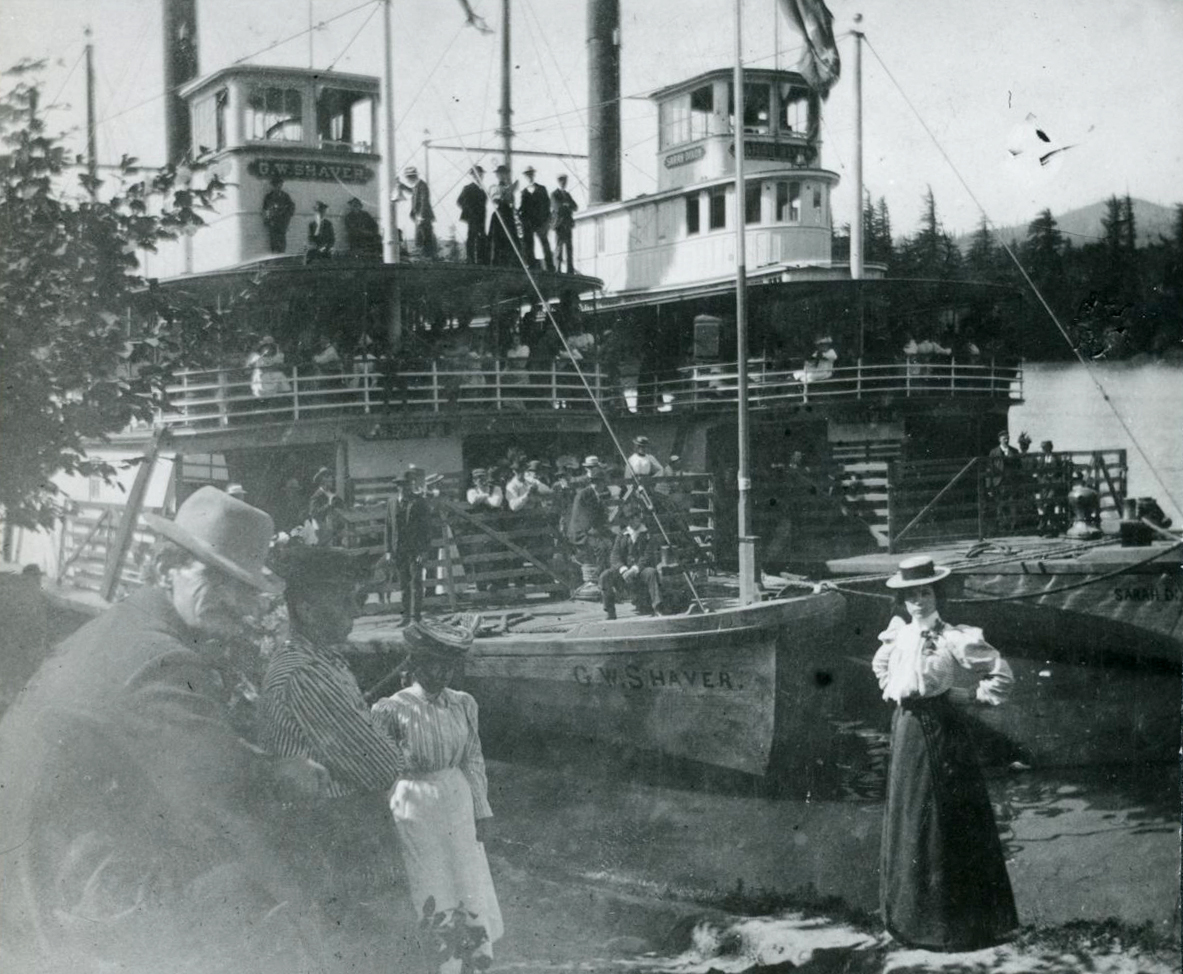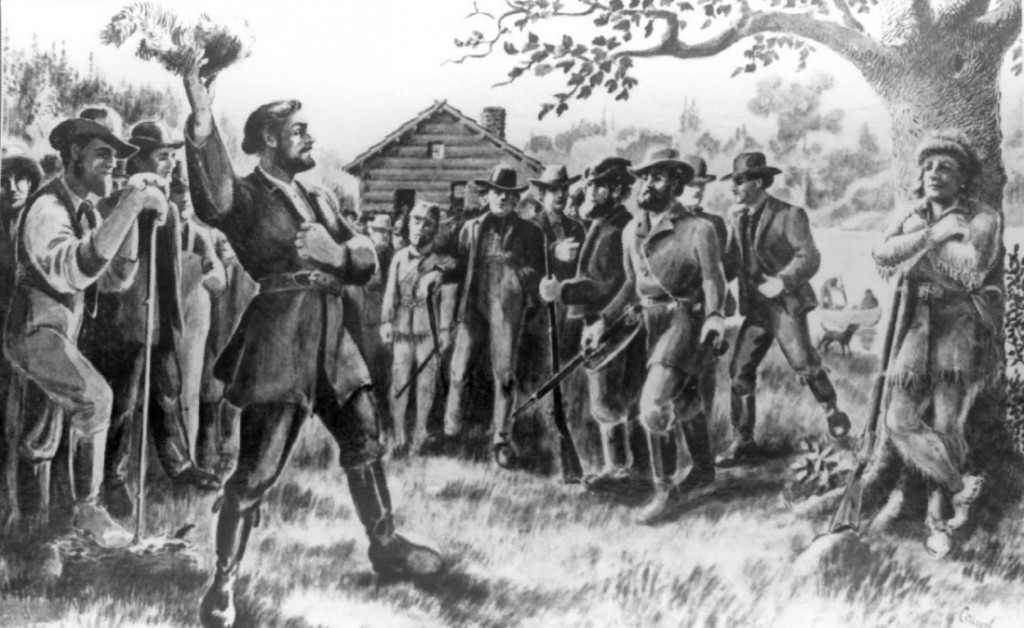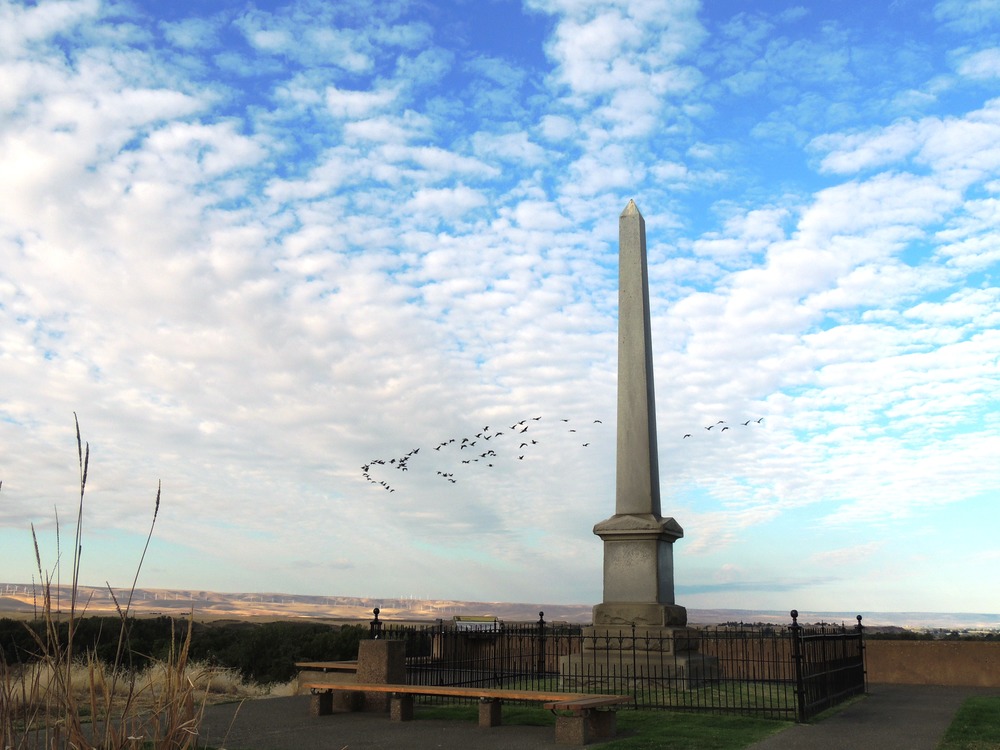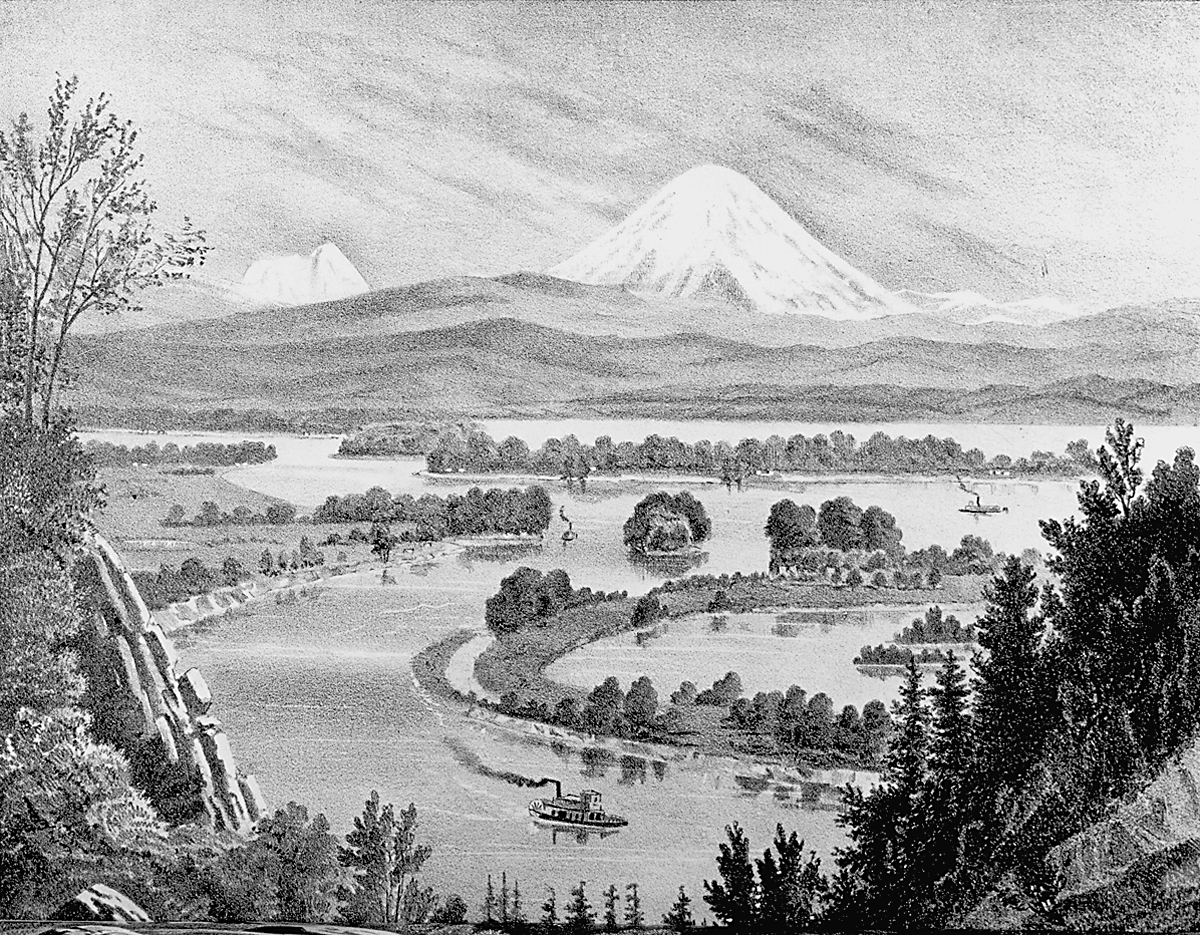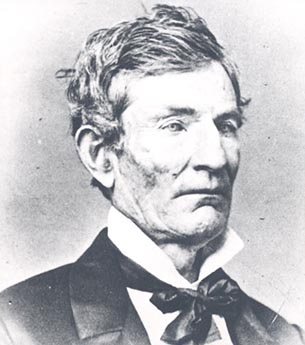Hugh Daniel Burns was an early immigrant to the Oregon Country who was involved in the politics of the region for many years, including as a participant in the May 1843 Champoeg meeting. A settler in the West Linn area, he was a mail carrier for the Provisional Government, traveling from Oregon to Missouri, and he served on a territorial commission formed after the Whitman killings in November 1847.
Hugh Burns was born in Tyrellspass, Wesmeath County, Ireland, in 1807, the fifth of eight children. He immigrated to the United States in 1825 and settled in Baltimore, Maryland. In March 1842, in Platte County, Missouri, he became a United States citizen before heading to Oregon that year as part of Elijah White’s wagon train. Many of his sisters and brothers later joined him in Oregon. His older sister Ellen arrived in 1851 and was part of a prominent St. Paul family; her son John Gearin became a U.S. senator. Burns was married twice, first to Mary Harrington and then to Mary Shields. He and his second wife had at least three children.
Burns filed a land claim in October 1842 for 320 acres across the Willamette River from Oregon City, from the mouth of the Clackamas River to the present-day Oregon City–West Linn Bridge. He platted a townsite and called it the City of Multnomah, although not much came of his vision. The mountain man Joe Meek had a cabin on the site. The flood of 1853 wiped out the buildings and the landing.
On May 2, 1843, Burns helped organize a meeting in Champoeg that laid the foundation for the first United States government in the Oregon Country. He was elected a magistrate at the meeting. His name is engraved on the monument at Champoeg State Park, and his portrait is on display at the Champoeg Historical Museum.
Burns received a contract in 1846 from the Provisional Government “to carry the mail from Oregon City to Weston, in Missouri, for one trip only.” Weston was a major port on the Missouri River in Platte County and the second largest town in the state. Postmaster William G. T’Vault, editor of the Oregon Spectator, announced the contract in his paper on February 5, 1846. Postage was fifty cents per letter sheet, and Burns was to receive half. He departed Oregon City on March 5, traveling with one horse south to California and then across the Sierra Nevadas to Nevada, Utah, Colorado, and Nebraska. He returned in time to take part in a November 3 meeting at his cabin. He also carried the mail to California and back to Oregon during the Gold Rush.
After the Whitman killings in November 1847, the Territorial Legislature appointed a Board of Commissioners to handle financing and raise a regiment of riflemen for the Cayuse War. When the first board did not fulfill its duties, the Legislative Act of December 22, 1847, appointed Burns as one of three new commissioners; they successfully completed their duties within a year.
In about 1848, Burns operated a ferry across the Willamette River from present-day West Linn to just north of Abernethy Creek. He wanted to build a bridge over the river in 1849, but nothing came from his application. He was said to be a “shrewd Hibernian and the principal blacksmith west of the Rocky Mts.,” according to J. W. Nesmith.
Burns left Oregon for California in the early 1860s after the 1857 death of Dr. John McLoughlin, whom he greatly admired. He died in San Francisco in May 1870 and was buried there in Holy Cross Cemetery.
In 1976, as part of the United States Bicentennial, Joe McKay, a great grandnephew of Burns and postmaster at St. Paul from 1958 to 1985, organized a ceremony in Oregon City to commemorate Burns’s ride across the country in 1846. Governor Bob Straub proclaimed March 5, 1976, Hugh Daniel Burns Day, and the ceremony included a horse and rider carrying mail from St. Paul to Salem.
-
![]()
The Willamette River separates Linn City (foreground) and Oregon City, 1867.
Courtesy Oregon Hist. Society Research Lib., Carleton Watkins, bb000072
-
![]()
Hugh Burns.
From Just Yesterday: A brief story of West Linn.
Related Entries
-
![Ancient Order of Hibernians (Portland Division)]()
Ancient Order of Hibernians (Portland Division)
The Ancient Order of Hibernians is an Irish Catholic fraternal organiza…
-
![Champoeg]()
Champoeg
The town of Champoeg had a brief but memorable life. Instigated by geog…
-
![John McLoughlin (1784-1857)]()
John McLoughlin (1784-1857)
One of the most powerful and polarizing people in Oregon history, John …
-
![Provisional Government]()
Provisional Government
The Provisional Government, created in May-July 1843, was the first gov…
-
![Whitman Murders]()
Whitman Murders
The 1847 murders of frontier missionaries Marcus and Narcissa Whitman n…
-
Willamette River
The Willamette River and its extensive drainage basin lie in the greate…
-
![William Green T'Vault (1809-1869)]()
William Green T'Vault (1809-1869)
William Green T’Vault had a wide-ranging career in early Oregon. A truc…
Related Historical Records
Map This on the Oregon History WayFinder
The Oregon History Wayfinder is an interactive map that identifies significant places, people, and events in Oregon history.
Further Reading
Corning, Howard McKinley. Willamette Landings. Portland: Oregon Historical Society Press, 2004.
"To Persons Wishing to Send Letters East," Oregon Spectator, February 5, 1846, 3. https://oregonnews.uoregon.edu/lccn/sn84022662/1846-02-05/ed-1/seq-3/.
McKay, Judy. “My Patriot.” Champoeg Pioneer 3, no 45 (October 1959).
McKay, Harvey. St. Paul, Oregon 1830-1890. Portland, Ore.: Binford & Mort, 1980.
Munnick, Harriet. “He ‘Paved’ The Trail for Mail.” Capital Journal Weekend, April 1, 1967.
Pintarich, Paul. “Mail Rider’s Kin Seeks Special Postage Stamp.” The Sunday Oregonian, April 16, 1967, 29.
Timmen, Fritz. “Fourteen Years Before the Pony Express.” Golden West Magazine, March 1969, 32 & 54.
“Hugh Burns.” Congressional Record – Senate, July 22, 1975.


